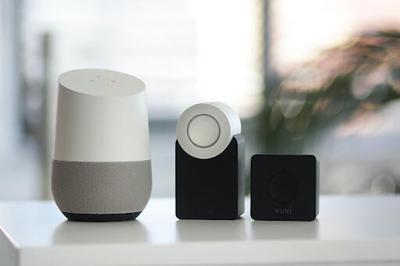Image source: Unsplash.com
Everyone loves smart technology since it makes our lives easier and more convenient. Since smart homes and IoT devices have been around for some time, more people are digitizing their homes.
A connected home makes it easy to do different tasks around the house. However, evaluating how each gadget contributes to your security and privacy is also essential.
You don’t want anyone listening to your conversations, getting your personal information, or stealing your banking details. Smart homes can be beneficial, but you also need to do several things to ensure security. Here’s what you need to do.
Protect your router
Your router is one of your smart home's most critical and vulnerable pieces. All the devices in your home communicate through the router and use it daily to send and receive information. That's why you need to protect it as much as possible.
When using a VPN to protect your router, you can cover all devices connected to it. It means protection for all data the devices send to the internet.
VPNs work so effectively that even your internet service provider won’t be able to see the activities of your smart devices. A VPN download only takes a few minutes, and it's straightforward, so make sure you consider it. You can also install this application on individual devices like smartphones, laptops, and TVs.
Create additional networks for your devices
Your router should have the ability to set up other networks. It’s generally an excellent idea to create a separate network that your IoT devices will only use. In fact, it is one of the FBI's recommendations for ensuring IoT safety.
By doing this, you are removing any threats from your primary network. In other words, when you use your private devices or when someone comes over, they can connect to the network that’s not associated with IoT.
Sometimes the vulnerabilities of connected devices can harm the IoT network just by connecting to it. On the other hand, hackers will often use devices to connect themselves to a network and use this connection to exploit weaknesses.
Use 2FA (two-factor authentication)
Passwords are one of the most exploited weaknesses, and even though we’ve been using them since the internet began, we’re still neglecting them in terms of security. Not only should you have strong passwords, but you should add an extra layer of protection using 2FA.
What is 2FA? It’s a security tool that generates a temporary random password every time you enter your password and sends it to your email or mobile device. In other words, you are required to enter a new password every time you log in, so even if someone gets your original passwords, they won’t receive this random one generated by 2FA.
If you’ve used any kind of internet banking, you’ve probably encountered 2FA. In most cases, IoT devices have some type of multi-factor authentication, but even if they don’t, you can use Google Authenticator to set everything up.
Adjust your privacy settings
The default privacy settings on devices are usually not user-oriented since manufacturers are always looking to collect data about their customers to improve their products and increase profits in the future.
In other words, they are not focusing on protecting your privacy and data. No matter what device you’re trying to set up, look for something like a control panel or a settings panel and look for security settings.
Look at all the features and disable those you don't need to use a device. For example, sometimes the microphone will be turned on, but it's never used. Disable all track or monitoring actions and prevent remote access features if this is something you don't need.
Update your devices regularly
All the IoT devices in our homes have their operating systems and software frameworks they run on. Software gets updated and weaknesses exploited, and that's why manufacturers release frequent updates to patch things up and secure areas that were proven to be fragile.
In other words, if you don't update your devices, hackers are more likely to exploit them. But it's not only about having the latest software, as you should also consider replacing IoT devices that are becoming outdated.
For example, people often use very old routers but replace their smartphones and other IoT devices. However, an old router uses outdated security protocols that can make your whole network vulnerable.
Conclusion
These are some ways you can quickly improve the security and privacy of your smart home. Of course, you can tweak and adjust many other things, but before you do that, take care of everything we've mentioned in this post.


(0) comments
We welcome your comments
Log In
Post a comment as Guest
Keep it Clean. Please avoid obscene, vulgar, lewd, racist or sexually-oriented language.
PLEASE TURN OFF YOUR CAPS LOCK.
Don't Threaten. Threats of harming another person will not be tolerated.
Be Truthful. Don't knowingly lie about anyone or anything.
Be Nice. No racism, sexism or any sort of -ism that is degrading to another person.
Be Proactive. Use the 'Report' link on each comment to let us know of abusive posts.
Share with Us. We'd love to hear eyewitness accounts, the history behind an article.